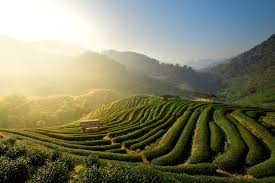How to Measure Tea for the Perfect Tea Drinking Experience
Tsara Tea – Tea has been cherished for centuries as more than just a drink — it is a ritual, a moment of pause, and an expression of flavor and aroma. Yet, even the finest tea leaves can yield a disappointing cup if they are not measured correctly. Finding the right tea-to-water ratio is a key step in unlocking the perfect tea experience, ensuring each sip delivers the depth, balance, and character intended by the grower and producer.
In this guide, we’ll explore why measuring matters, how to measure different types of tea, and tips to fine-tune your brewing process for consistently delicious results.
Why Measuring Tea Matters
The magic of tea lies in balance. Too many leaves in your teapot or infuser can make the tea overpowering, astringent, or even bitter. Too few, and you end up with a weak, watery brew that lacks body and aroma.
Proper measurement ensures:
- Consistent flavor: Every cup tastes just as good as the last.
- Efficient use of tea: No waste of precious leaves.
- True flavor profile: You enjoy the tea as it was intended to taste, without distortion.

The Standard Ratio
A common guideline for loose leaf tea is:
1 teaspoon (about 2–3 grams) of loose leaf tea per 8 ounces (240 ml) of water.
However, this is just a starting point. Leaf size, tea type, and personal preference all influence the exact amount you should use. For example, a dense, tightly rolled oolong may require less volume by spoon but more weight compared to a fluffy white tea.

Measuring by Volume vs. Weight
Measuring by volume (using teaspoons or tablespoons) is quick and easy, especially if you’re brewing casually. The drawback is that leaf shapes and sizes vary greatly between tea types, meaning a teaspoon of one tea might weigh double that of another.
Measuring by weight (using a digital kitchen scale) gives the most accuracy. It’s the preferred method for tea professionals and serious tea drinkers who want to replicate results precisely.
For best accuracy:
- Invest in a small scale that measures to at least 0.1 grams.
- Tare the scale with your brewing vessel or measuring spoon before adding the leaves.
Measuring Different Types of Tea
Because tea varieties differ in density and leaf size, here’s a general guide:
| Tea Type | Weight per 8 oz Water | Approx. Teaspoon Equivalent |
| White Tea | 3–4 g | 1.5–2 tsp |
| Green Tea | 2–3 g | 1–1.5 tsp |
| Oolong Tea | 4–5 g | 1–2 tsp (tightly rolled) |
| Black Tea | 2–3 g | 1–1.5 tsp |
| Herbal Tea | 3–4 g | 1.5–2 tsp |
These measurements work well for Western-style brewing. If you are preparing tea in the traditional Chinese gong fu style, you will use a much higher leaf-to-water ratio.
Adjusting for Taste
Your personal preference is the ultimate guide. If you enjoy a stronger brew, increase the tea leaves slightly. For a lighter, more delicate cup, reduce the quantity. Keep in mind that you can also control flavor intensity through steeping time and water temperature.
Tip: Make adjustments gradually — a small change of 0.5–1 gram can have a big impact on taste.
Measuring for Multiple Servings
When brewing a teapot for several people, simply multiply your base measurement by the number of servings. For example, if your ratio is 3 grams per 8 oz cup, and your teapot holds 32 oz (4 cups), you would use 12 grams of tea.
Tools That Make Measuring Easy
- Measuring Spoons – Simple and inexpensive; great for beginners.
- Digital Scale – Accurate and consistent; ideal for tea connoisseurs.
- Pre-Portioned Sachets – Convenient for travel or quick brewing.
- Tea Scoops – Often beautifully crafted to hold a specific tea amount.

Factors That Affect Measurement
- Tea Density & Shape – Rolled oolongs are heavier per spoon than flat green tea leaves.
- Water Quality – Soft, clean water will highlight delicate flavors; hard water may dull them, requiring slight adjustments.
- Brewing Method – Western, gong fu, cold brew, and iced tea methods each require different ratios.
Final Thoughts
Perfect tea brewing is part science, part art. Measuring your tea carefully is the foundation, but feel free to experiment within a small range to find what works best for you. Keep notes on your preferred ratios, and you’ll soon develop a personal brewing style that consistently delivers the perfect cup.
When you measure with intention, every sip becomes a moment of joy, connecting you not only to the tea in your cup but also to the traditions, craftsmanship, and care that brought it to you.


